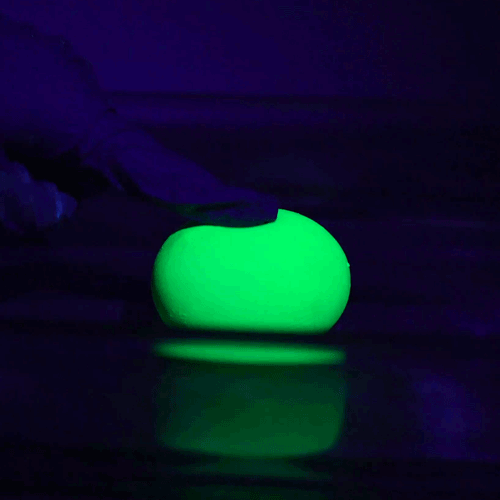Step-by-step tutorial
Step 1
Gather your materials.

Step 2
Put on your gloves. Remove the felt tip marker from the highlighter (ask your adult assistant for help). Place the felt tip into the glass jar or bowl. Add the cup of vinegar to cover. Let sit for at least 5 minutes.
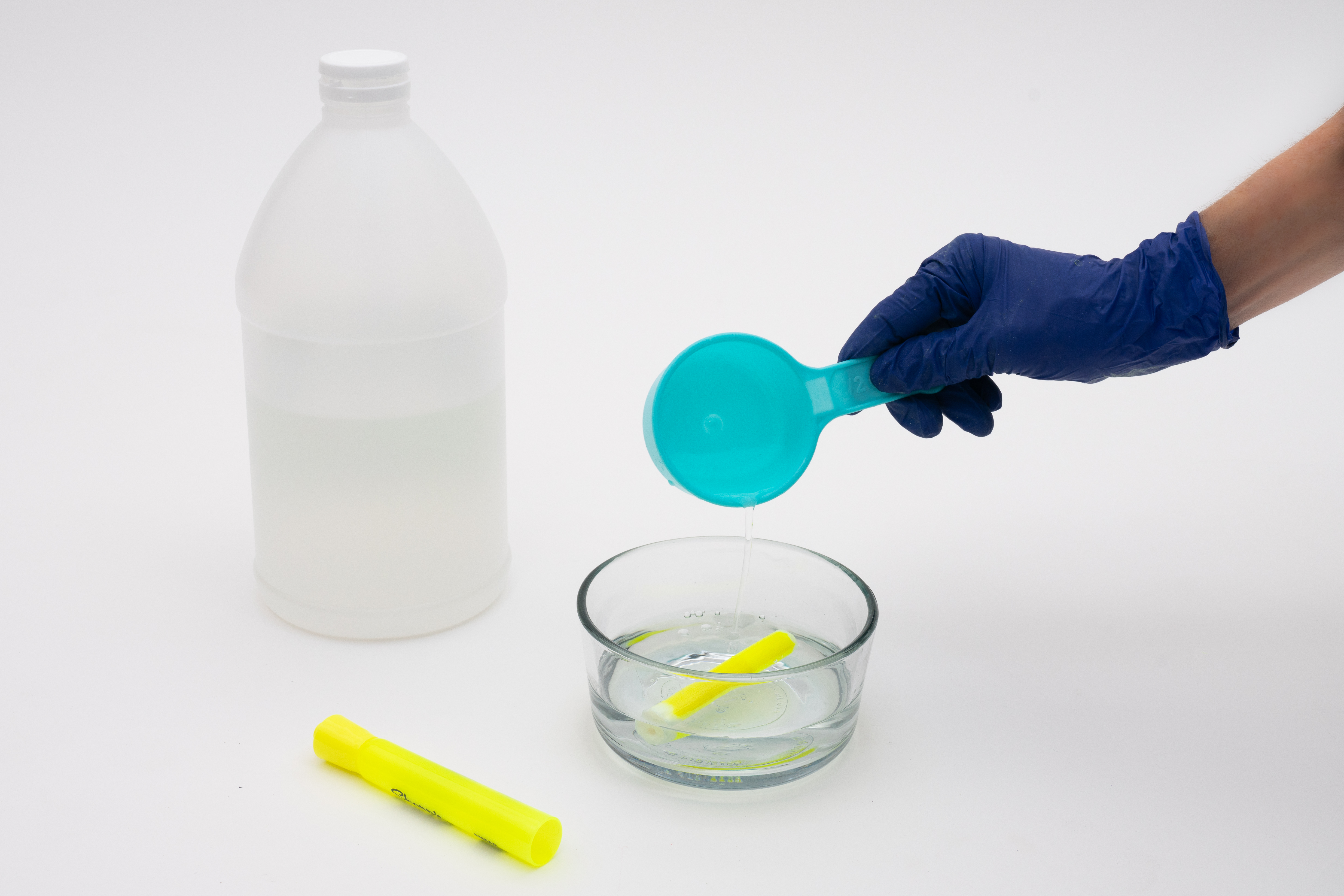
Step 3
Using gloved fingers, hold the felt tip over the vinegar and squeeze the high lighter felt tip to release all of fluorescent ink until no more ink releases.
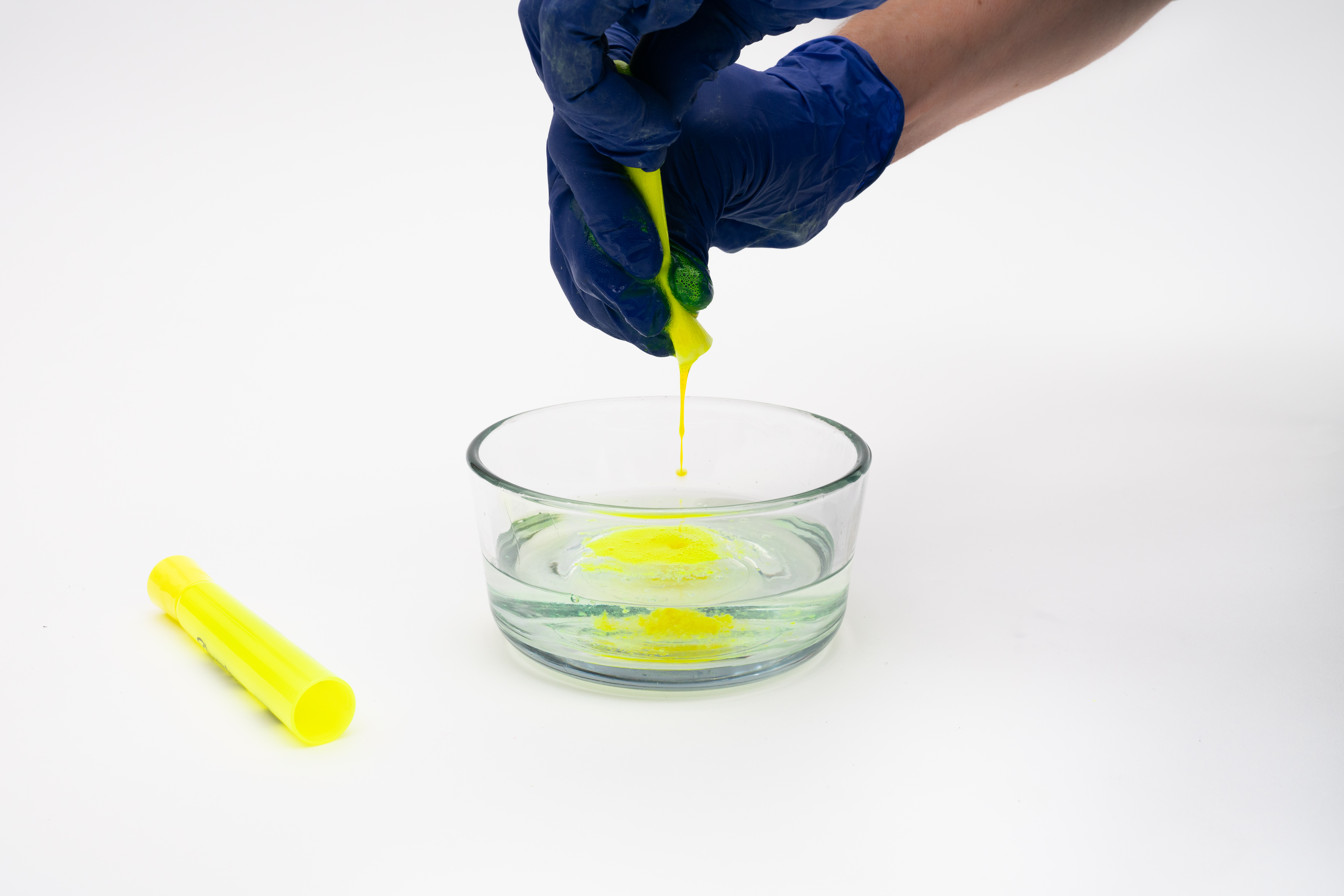
Step 4
Very gently place the egg in the jar. Add the fluorescent vinegar solution to the jar to cover the egg. Notice how lots of tiny bubbles cover the egg. Do you know why?
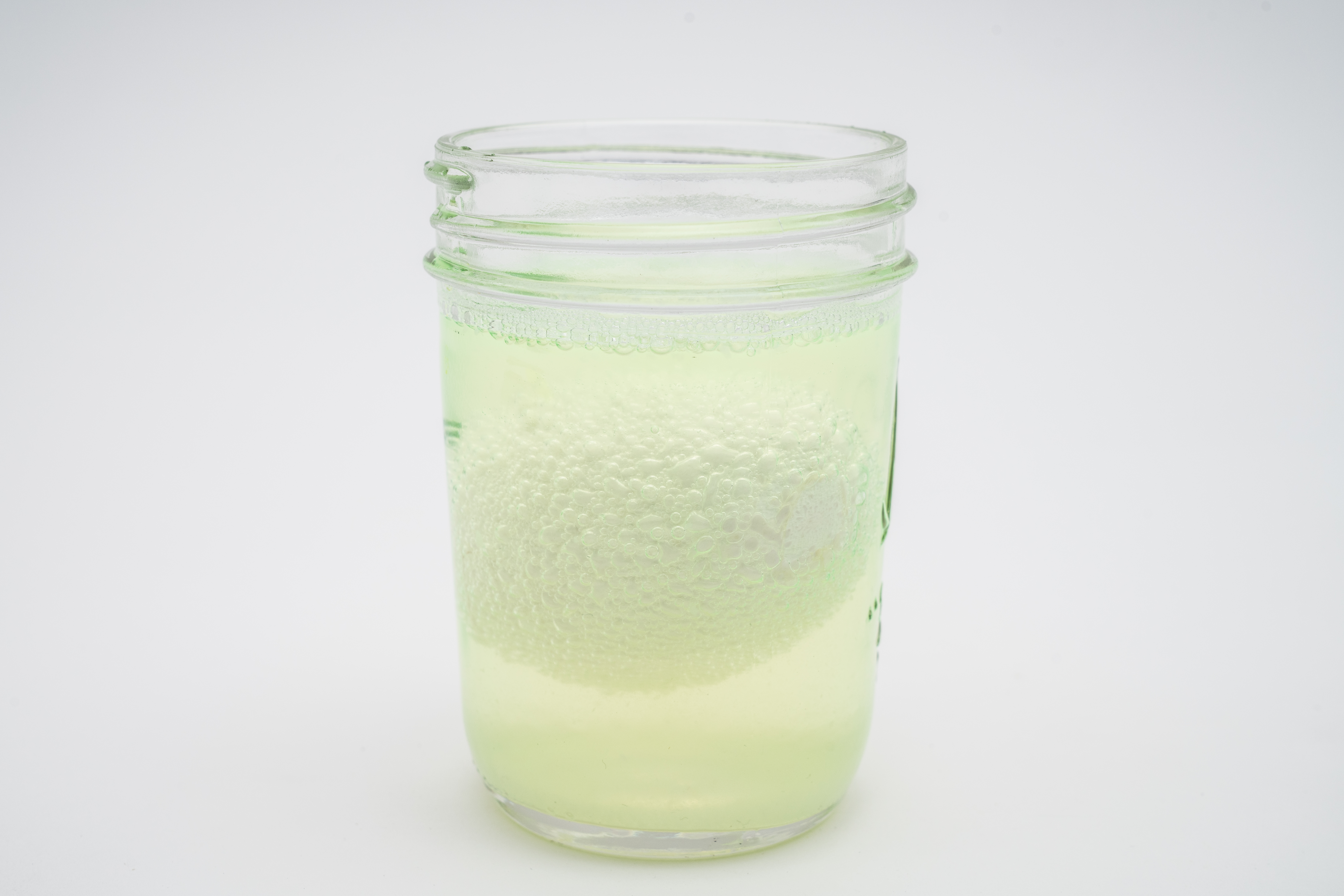
Step 5
Let the egg sit for 2 days until the shell dissolves leaving the membrane. Do you see how the color of the liquid has changed?
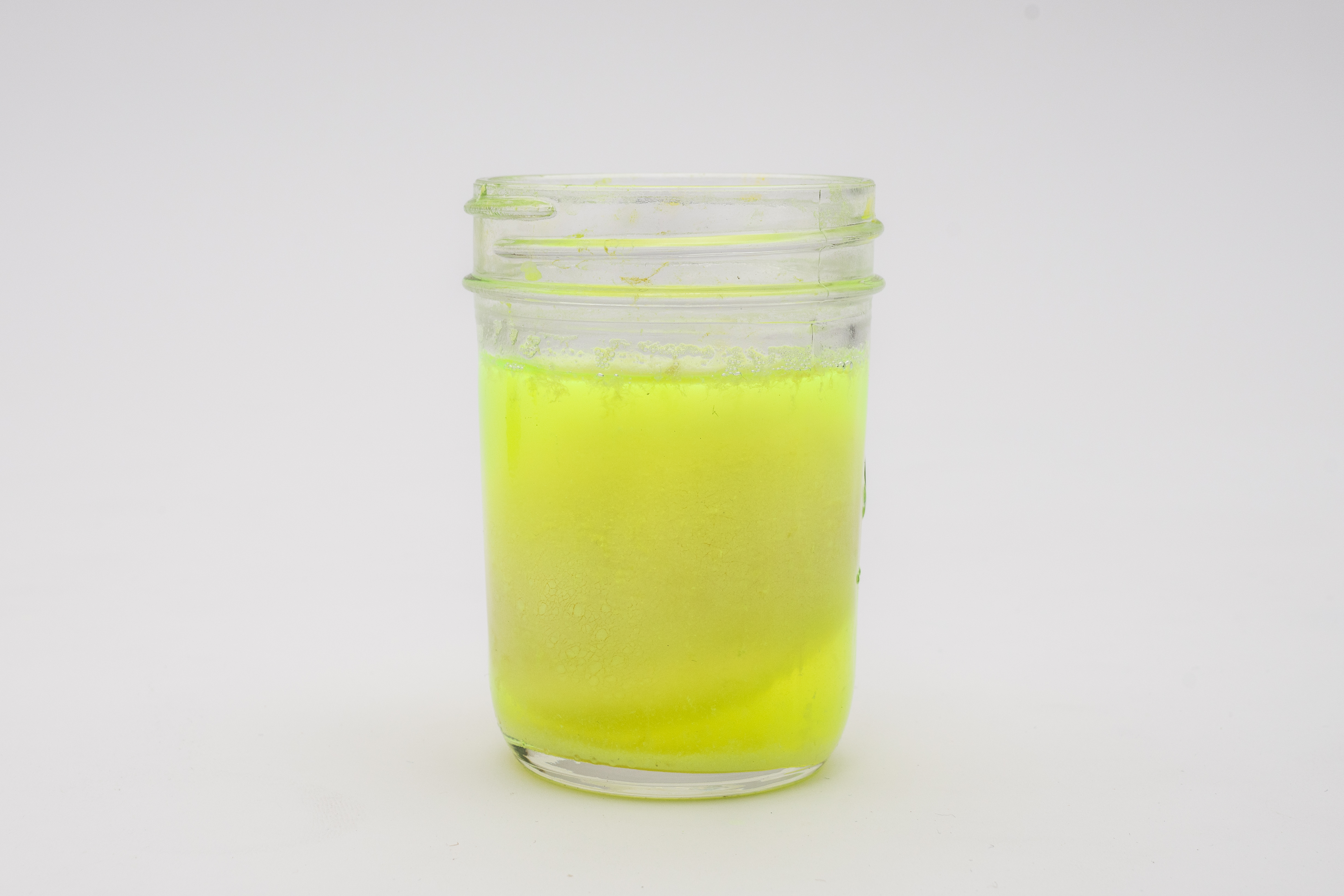
Step 6
Put on your gloves and gently pull the egg out of the vinegar solution.

Step 7
Place black light in front of egg and watch it glow. Gently (VERY gently!) bounce it. Do you see how it moves?
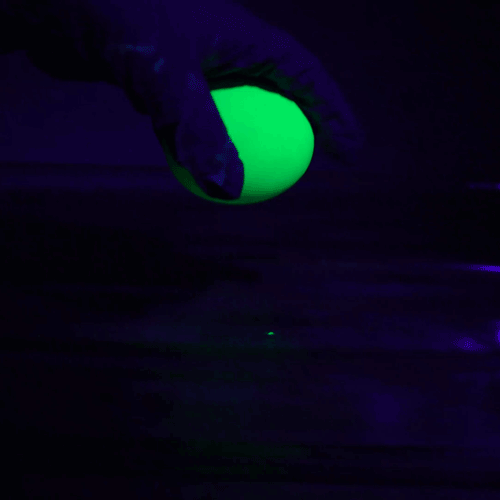
Step 8
Be careful! Press too hard your egg will burst!
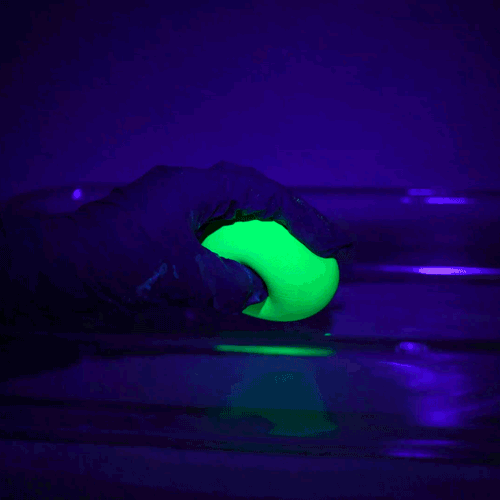
Warning
When you put the raw egg into the vinegar solution, did you see all of the tiny bubbles cover it? These are carbon dioxide bubbles caused by a chemical reaction between the acid in the vinegar and the calcium carbonate of the eggshell!
The vinegar dissolved the egg shell leaving a thin membrane (which is like a soft, transparent skin). Membranes let some stuff pass through (like the water in the vinegar and the highlighter fluid) so as the egg sat in the vinegar-highlighter solution, some of the glowing molecules traveled into the egg. As a result, the egg expanded! If you burst the egg, you will see that the glowing highlighter molecules passed all the way through to the yolk!
Why does a black light make things glow? Black lights give off most of their light in the ultraviolet spectrum, which is out of range for the human eye. Even though ultraviolet rays are mostly invisible to us, they can cause certain materials to emit light in the visible spectrum. These materials, called fluorophores and phosphors, are found in things like white clothes, teeth, and fluorescent pens. So if you shine a black light on them, they will naturally glow in the dark!
